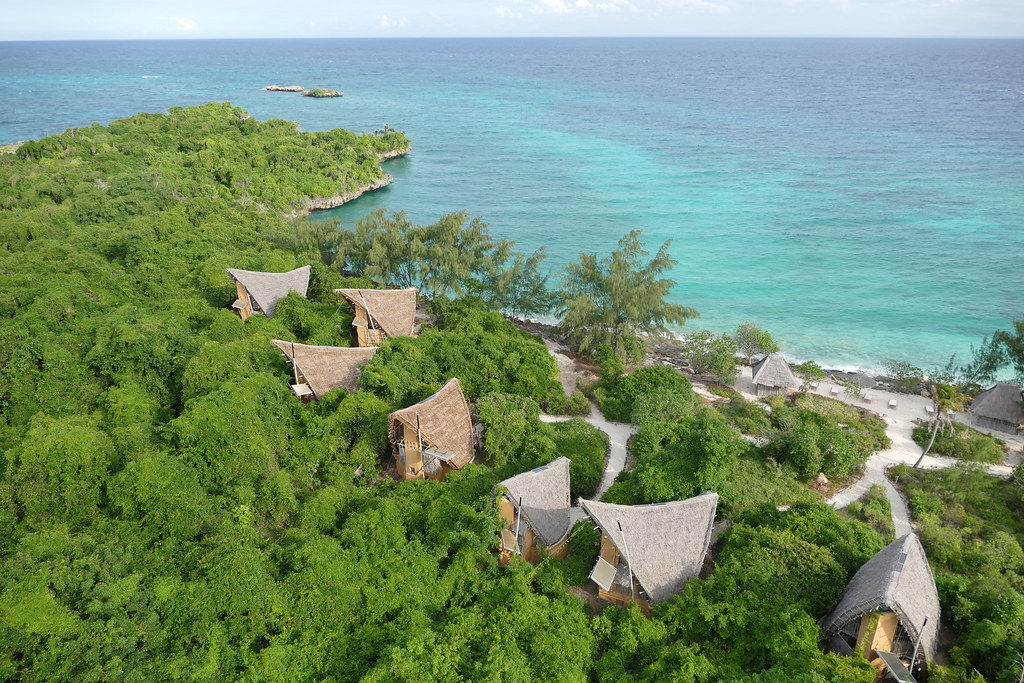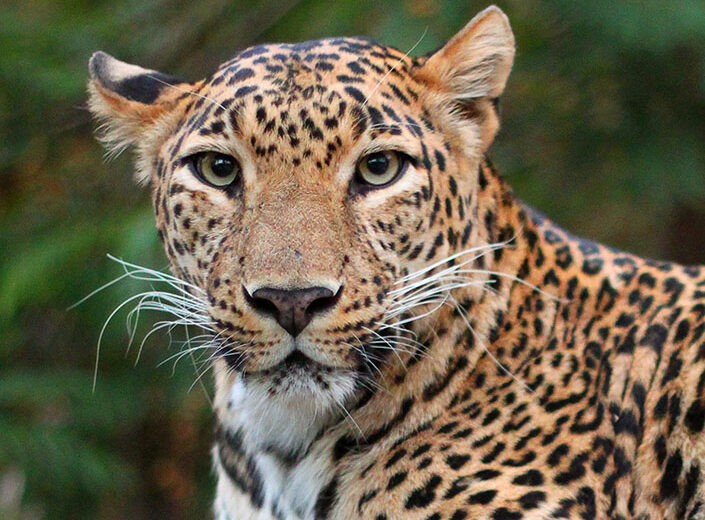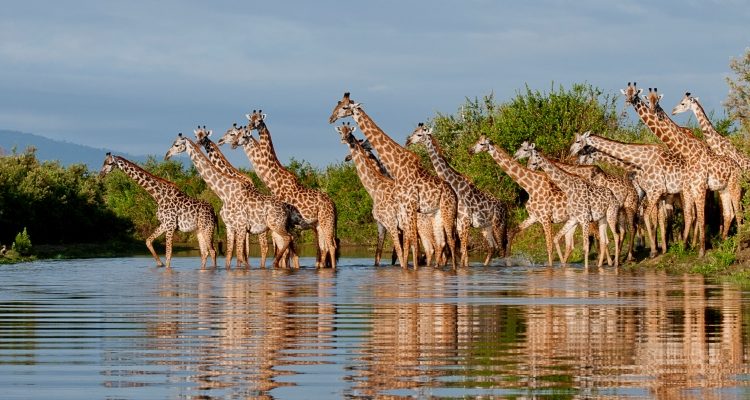Chumbe Island
Chumbe Island
Chumbe Island, located just off the coast of Zanzibar in the Indian Ocean, is a pristine and eco-friendly paradise known for its natural beauty and conservation efforts. Here's an overview of Chumbe Island and what makes it a unique destination:

Key features of Chumbe Island
Marine Protected Area: Chumbe Island is part of the Chumbe Island Coral Park, a protected marine area established in 1994. It was the first marine park in Tanzania and is dedicated to conserving the rich marine biodiversity, including coral reefs, fish species, and other marine life. The park is a model of sustainable and responsible tourism.
-
-
Coral Reefs: The coral reefs around Chumbe Island are some of the healthiest and most diverse in the western Indian Ocean. They are home to a wide variety of corals and marine species, making it an ideal destination for snorkeling and scuba diving. The island's unique and colorful underwater world is a must-see for marine enthusiasts.
-
Chumbe Island Coral Park (CHICOP) Lodge: The Chumbe Island Coral Park Lodge is the only accommodation on the island. It offers a secluded and exclusive experience with eco-bungalows that blend harmoniously with the natural surroundings. The lodge follows strict eco-friendly practices and operates on solar power, rainwater harvesting, and composting toilets.
-
Eco-Tourism: Chumbe Island is a prime example of eco-tourism. The lodge and its operations are designed to have a minimal environmental impact while providing a comfortable and sustainable experience for guests. Visitors can learn about the island's conservation efforts, sustainability, and eco-friendly practices.
-
Activities: Chumbe Island offers a range of activities for nature lovers and adventure seekers. Snorkeling and diving are the main attractions, allowing guests to explore the vibrant coral gardens and swim alongside an array of fish species. You can also take guided nature walks, enjoy bird watching, and learn about the island's history and conservation.
-
Guided Tours: Knowledgeable guides at Chumbe Island provide educational tours about the island's flora, fauna, and marine life. They can also share insights into the ongoing coral reef restoration efforts and the conservation work being done to protect the island's natural resources.
-
Bird Watching: The island is a haven for bird watchers, with various species of coastal and migratory birds. You can observe these birds in their natural habitat and capture breathtaking moments in a tranquil setting.
-
Best Time to Visit
- Overview
- Things To Do
- Dry Season
- Snorkeling and diving
- Whale Shark Tours
- Cultural Experiences
- Avoiding Crowds
- Accommodation
- How To Get There
The best time to visit Chumbe Island, located off the coast of Zanzibar in Tanzania, largely depends on your preferences and the activities you plan to engage in. However, Chumbe Island enjoys pleasant weather throughout much of the year, making it an appealing destination for both relaxation and marine exploration. Here’s a breakdown of the best times to visit Chumbe Island based on different factors:
-
Dry Season (June to October): This period is considered the high season for visiting Chumbe Island. The weather is generally dry and cool, with lower humidity levels. The dry season is ideal for snorkeling and diving, as the visibility underwater is excellent, and the coral reefs are at their best. The sea is usually calm during these months, providing ideal conditions for water activities.
-
Wet Season (November to May): The wet season in Chumbe Island includes both the “short rains” from November to December and the “long rains” from March to May. While there may be occasional rainfall, these months offer unique advantages for travelers. The island is lush and green during this time, with vibrant plant life and bird activity. The landscape is in full bloom, making it a picturesque period for nature enthusiasts.
-
Whale Shark Season (October to March): If you’re interested in snorkeling or diving with whale sharks, consider visiting Chumbe Island between October and March. This is the peak season for whale shark sightings in the region. However, it’s essential to plan your visit during this period if you specifically want to witness these magnificent creatures.
-
Avoiding Crowds: Chumbe Island is a destination that attracts eco-conscious travelers seeking a tranquil and secluded experience. To avoid crowds, it’s advisable to visit during the low season, which includes the wetter months. Fewer tourists mean more privacy and a greater sense of exclusivity.
-
Hatching Turtles (February to August): If you’re interested in witnessing sea turtles hatching and making their way to the sea, consider visiting Chumbe Island between February and August. The island is an important nesting site for green and hawksbill turtles, and during this period, you may have the chance to observe these remarkable events.
-
Availability and Rates: Accommodation rates on Chumbe Island can vary, so it’s a good idea to plan your visit when you can secure the best deals or packages. Booking in advance can also help you secure the accommodations you prefer, especially during the high season.
Ultimately, the best time to visit Chumbe Island depends on your personal interests and priorities. Whether you prefer a dry season for underwater adventures, a lush and green landscape during the wet season, or a chance to witness specific natural phenomena, Chumbe Island offers something special year-round.
Chumbe Island, located off the coast of Zanzibar, offers a variety of activities and experiences for visitors who appreciate nature, marine life, and sustainable tourism. Here are some of the things you can do while visiting Chumbe Island:
-
Snorkeling and Diving: Chumbe Island is renowned for its pristine coral reefs and diverse marine life. Snorkeling and diving are the primary activities here. Explore vibrant coral gardens, swim alongside colorful fish, and discover the beauty of the underwater world. The island’s marine park is home to over 400 species of fish and numerous types of coral.
-
Guided Reef Walks: Join experienced guides on reef walks during low tide. They will introduce you to the fascinating marine life, including sea cucumbers, hermit crabs, and unique coral formations. It’s a wonderful opportunity to learn about the delicate ecosystems of the intertidal zone.
-
Whale Shark Tours: If you visit between October and March, you may have the chance to go on a whale shark tour. These gentle giants are often spotted in the area, and snorkeling or diving with them is an unforgettable experience.
-
Bird Watching: Chumbe Island is a paradise for bird watchers. Its coastal and forested areas are home to various bird species, making it a great destination for birdwatching enthusiasts. You can spot coastal and migratory birds during your stay.
-
Nature Walks: Take guided nature walks around the island to learn about the unique flora and fauna. Chumbe Island is a nature reserve with various plant species, including rare and endemic ones. Guides can provide insights into the island’s conservation efforts.
-
Turtle Hatching: Depending on the time of year, you might have the opportunity to witness the hatching of sea turtles. Chumbe Island is a nesting site for green and hawksbill turtles, and watching these tiny creatures make their way to the sea is a heartwarming experience.
-
Stargazing: Chumbe Island’s remote location offers a fantastic opportunity for stargazing. With little light pollution, the night sky comes alive with stars, making it an ideal setting for astronomers and night sky enthusiasts.
-
Learn about Conservation: The Chumbe Island Coral Park is dedicated to marine conservation and eco-tourism. You can learn about their efforts to protect the coral reefs and marine life through guided tours and discussions with conservation experts.
-
Relaxation: Chumbe Island is a tranquil and secluded destination. Enjoy moments of peace and relaxation on the island’s pristine beach, and take in the beauty of the surroundings. It’s a great place to unwind, read a book, or practice yoga.
-
Educational Programs: The island offers educational programs, including guided tours, lectures, and presentations about the environment and marine conservation. These programs are designed to raise awareness about the importance of preserving marine ecosystems.
-
Sustainable Tourism: Chumbe Island is a model of sustainable tourism. Understanding and appreciating their eco-friendly practices can be an educational experience in itself.
-
Beach Picnics: Enjoy a beachside picnic or a romantic dinner on the shores of Chumbe Island. Many accommodations offer private dining options for a memorable evening.
Chumbe Island provides a unique opportunity to connect with nature, learn about marine conservation, and appreciate the beauty of the underwater world. Whether you’re an adventure seeker, a nature enthusiast, or simply seeking a serene and eco-friendly escape, Chumbe Island has something to offer every type of traveler.
Chumbe Island, located off the coast of Zanzibar in Tanzania, experiences a tropical climate with distinct wet and dry seasons. The dry season is a particularly appealing time to visit the island, as it offers ideal weather conditions for various outdoor activities and marine exploration. Here’s what you can expect during the dry season in Chumbe Island:
Dry Season (June to October):
-
Weather: The dry season in Chumbe Island typically occurs from June to October. During this time, the weather is characterized by clear skies, minimal rainfall, and lower humidity levels. The days are sunny and warm, and evenings can be pleasantly cool.
-
Optimal Visibility: The dry season is the best time for snorkeling and diving in Chumbe Island’s marine park. The crystal-clear waters provide excellent underwater visibility, allowing you to fully appreciate the colorful coral reefs and diverse marine life.
-
Calm Seas: The sea is generally calm during the dry season, creating ideal conditions for water activities. Whether you’re snorkeling, diving, or simply enjoying a boat ride, you’re likely to experience smooth and gentle waters.
-
Whale Shark Season: Chumbe Island is part of a broader region where whale sharks are often spotted between October and March. If you visit during the latter part of the dry season, you may have the opportunity to embark on a whale shark tour and swim with these magnificent creatures.
-
Bird Watching: Chumbe Island is a haven for birdwatchers, and the dry season is an excellent time to observe a variety of coastal and migratory birds. The clear skies and pleasant weather create perfect conditions for birdwatching enthusiasts.
-
Guided Activities: The island’s guided activities, such as reef walks and nature walks, are more enjoyable during the dry season due to the comfortable weather conditions.
-
Sunset Views: Chumbe Island offers breathtaking sunset views during the dry season. The clear skies and calm waters create a picturesque backdrop for watching the sun dip below the horizon.
-
Privacy: Chumbe Island is a secluded and exclusive destination, and during the dry season, there are fewer visitors, allowing for a more private and peaceful experience.
-
Eco-Tourism: Chumbe Island’s commitment to eco-tourism and sustainability is particularly evident during the dry season. You can learn about their conservation efforts and appreciate their eco-friendly practices, which help protect the island’s natural resources.
It’s important to note that the dry season, especially the months of June to August, is considered the high season in Chumbe Island. Accommodations may be in higher demand, so it’s advisable to make reservations well in advance if you plan to visit during this time. Overall, the dry season offers the best conditions for underwater activities, nature exploration, and relaxation on this beautiful, eco-friendly island.
-
Snorkeling and diving are two of the most popular and thrilling activities in Chumbe Island, located off the coast of Zanzibar. This eco-friendly marine park boasts some of the most vibrant coral reefs and diverse marine life in the western Indian Ocean. Here’s what you need to know about snorkeling, diving, and the exciting whale shark tours in Chumbe Island:
Snorkeling and Diving:
-
Vibrant Coral Reefs: Chumbe Island is renowned for its pristine and vibrant coral reefs. The coral gardens here are home to a wide variety of hard and soft corals, including some rare and endangered species. Snorkelers and divers can explore these underwater wonderlands, marvelling at the colorful and intricate formations.
-
Diverse Marine Life: The marine life around Chumbe Island is incredibly diverse. Snorkelers and divers have the chance to encounter over 400 species of fish, including reef fish, pelagics, and endemic species. You can also spot various invertebrates, sea turtles, and even the occasional octopus or seahorse.
-
Crystal-Clear Waters: During the dry season, which typically occurs from June to October, the waters around Chumbe Island are crystal clear. This ideal visibility allows you to fully appreciate the underwater world, making it a great time for water activities.
-
Guided Excursions: Guided snorkeling and diving excursions are available for visitors of all experience levels. Knowledgeable guides provide safety briefings and lead you to the best spots for observing marine life and coral formations. They can also offer insights into the local marine ecosystems and conservation efforts.
-
Snorkeling at the Coral Park: The Chumbe Island Coral Park (CHICOP) Lodge offers guided snorkeling experiences within the park’s boundaries. This marine park was established in 1994 and is a protected area, ensuring the conservation of its precious marine resources.
-
-
Whale Shark Season: Chumbe Island is situated in a region where whale sharks are often spotted between October and March. During this time, the island offers special whale shark tours, providing you with the opportunity to swim with these gentle giants.
-
Guided Tours: Whale shark tours are typically conducted with experienced guides who are knowledgeable about the behavior of these magnificent creatures. The guides prioritize safety and responsible wildlife interactions, ensuring a respectful and memorable experience.
-
Unforgettable Encounters: Swimming alongside a whale shark, the largest fish in the world, is an unforgettable and humbling experience. These gentle filter feeders can reach lengths of up to 18 meters (59 feet), and their sheer size and grace in the water are awe-inspiring.
-
Photography and Conservation: Whale shark tours often offer the chance for underwater photography, allowing you to capture these majestic creatures in their natural habitat. Many of these tours also promote whale shark conservation, contributing to scientific research and awareness.
Whether you’re a snorkeling and diving enthusiast or a wildlife lover seeking the thrill of swimming with whale sharks, Chumbe Island provides a unique and eco-friendly destination for marine experiences. It’s a place where you can connect with nature, appreciate the beauty of the underwater world, and contribute to the preservation of this pristine marine environment.
Chumbe Island, located off the coast of Zanzibar in Tanzania, is primarily known for its pristine marine environment and eco-friendly tourism. While it is not a destination focused on traditional cultural experiences like some other parts of Zanzibar, it does offer visitors a unique cultural experience rooted in sustainability and conservation. Here’s what you can expect in terms of cultural experiences on Chumbe Island:
-
Eco-Tourism and Conservation: Chumbe Island is a model of eco-tourism and conservation. Visitors have the opportunity to learn about and actively participate in the island’s conservation efforts. This includes discussions and guided tours that focus on the protection of coral reefs, marine life, and the island’s unique ecosystems.
-
Guided Tours: Knowledgeable guides on the island can provide insights into the local flora and fauna, the importance of the Chumbe Island Coral Park (CHICOP), and the measures taken to maintain a sustainable and eco-friendly tourism destination.
-
Sustainable Practices: Chumbe Island is a showcase for sustainable practices in the tourism industry. You can learn about the island’s use of solar power, rainwater harvesting, and composting toilets, which reduce its environmental impact. These eco-friendly practices are integrated into daily life on the island, providing a hands-on lesson in responsible and sustainable living.
-
Conservation Programs: The island’s conservation programs are an integral part of its cultural experience. Visitors can gain insights into the ongoing coral reef restoration efforts, the monitoring of endangered species, and other conservation initiatives. These programs highlight the island’s commitment to environmental protection and education.
-
Community Involvement: While Chumbe Island doesn’t focus on traditional cultural experiences, it does engage with local communities in nearby Zanzibar. The island is part of community initiatives that promote sustainability and provide opportunities for nearby communities. You can learn about these collaborations and the positive impact they have on the local culture and economy.
-
Environmental Awareness: The educational component of Chumbe Island’s cultural experience extends to raising awareness about the importance of marine conservation and eco-friendly practices. This knowledge can be carried forward and shared with others, contributing to a broader cultural understanding of environmental responsibility.
While the cultural experience on Chumbe Island is distinct from what you might find in Zanzibar’s historic Stone Town or other parts of the archipelago, it offers a unique perspective on the cultural significance of environmental conservation and sustainable living. Visitors have the opportunity to immerse themselves in a culture that prioritizes the preservation of natural resources and the protection of fragile ecosys
Chumbe Island is a small, eco-friendly island located off the coast of Zanzibar in Tanzania. It’s designed to provide a secluded and exclusive experience for visitors, but if you’re looking to further enhance your privacy and avoid crowds, here are some tips to consider:
-
Visit During the Low Season: The island has a high season, usually during the dry months from June to October, and a low season, which typically falls during the wetter months from November to May. If you prefer a quieter experience, consider visiting during the low season when there are fewer tourists.
-
Weekdays vs. Weekends: If your schedule allows for flexibility, plan your visit for weekdays rather than weekends. Weekends tend to attract more day-trippers and local visitors, while weekdays are often quieter.
-
Book Well in Advance: Chumbe Island offers limited accommodations, and they can fill up quickly, especially during the high season. To secure your stay and potentially have the island to yourself or in the company of a few other guests, book well in advance.
-
Choose Off-Peak Times: Consider visiting during the shoulder periods at the beginning or end of the high season. These times may offer a balance between good weather and fewer visitors.
-
Private Excursions: While on the island, you can arrange private excursions for activities such as snorkeling, diving, and reef walks. These private experiences offer exclusivity and can be tailored to your preferences.
-
Opt for Longer Stays: Instead of a short day trip, choose a more extended stay on Chumbe Island. This way, you can enjoy a more relaxed pace and explore the island and its marine park at your leisure.
-
Ask for Off-Peak Hours: When arranging activities or dining, ask the staff if there are off-peak hours when certain facilities may be less crowded. This can help you make the most of your experience.
-
Enjoy Early Mornings and Late Evenings: Take advantage of the quiet mornings and evenings. Enjoy sunrise and sunset walks on the beach, as they often provide a serene atmosphere.
-
Participate in Guided Activities: The guided activities, such as reef walks and nature walks, typically have smaller groups. Participating in these activities can offer a more intimate experience and opportunities for learning.
-
Respect Nature Quietly: Chumbe Island is a place to connect with nature and enjoy its tranquility. Be mindful of the environment and wildlife, and avoid loud activities or disturbances that might disrupt the peaceful atmosphere.
Remember that Chumbe Island’s appeal lies in its exclusivity and sustainability. By following these tips, you can enhance your experience and fully enjoy the serene and pristine environment that the island offers.
Accommodation on Chumbe Island is a unique and eco-friendly experience. The Chumbe Island Coral Park (CHICOP) Lodge offers visitors the opportunity to stay on this pristine island, which is dedicated to marine conservation and responsible tourism. Here’s what you can expect from the accommodation on Chumbe Island:
1. The Bungalows:
- The heart of the CHICOP Lodge’s accommodation is its seven spacious, thatch-roofed bungalows.
- Each bungalow is designed for eco-friendly living, with minimal environmental impact. They are constructed with sustainable materials and raised on stilts to promote natural ventilation and cooling.
- The bungalows are designed to be open to the sea breeze, ensuring natural airflow and a constant connection with the surrounding environment.
- They feature private bathrooms with composting toilets and solar-heated showers, demonstrating the lodge’s commitment to sustainable practices.
2. Privacy and Seclusion:
- The limited number of bungalows ensures privacy and exclusivity. You won’t find large crowds on Chumbe Island, which enhances the sense of seclusion and relaxation.
3. Ocean Views:
- All bungalows offer stunning ocean views, allowing you to wake up to the sound of the waves and enjoy breathtaking sunsets from your private veranda.
4. Sustainable Living:
- Chumbe Island is committed to sustainability. The lodge operates on solar power, collects rainwater, and practices waste reduction and recycling. As a guest, you’ll be living in harmony with the environment and contributing to the island’s eco-friendly efforts.
5. Eco-Friendly Amenities:
- The lodge provides essential amenities for your stay, including comfortable beds with mosquito nets, eco-friendly toiletries, and fresh linens.
- Wi-Fi is not available in the bungalows, further emphasizing the island’s disconnect from the digital world. This allows you to fully immerse yourself in the natural surroundings.
6. Dining:
- Meals at the CHICOP Lodge are prepared using locally sourced ingredients, including fresh seafood and organic produce. The lodge can cater to dietary preferences and restrictions, ensuring a personalized dining experience.
7. Guided Experiences:
- Your stay at the lodge includes guided activities such as snorkeling and reef walks, which are led by knowledgeable guides who can provide insights into the island’s ecosystems and conservation efforts.
8. Exclusive Beachfront Access:
- The bungalows are nestled along the pristine beaches of Chumbe Island, offering direct access to the clear waters and coral reefs for swimming and snorkeling.
9. Educational Opportunities:
- Beyond relaxation, Chumbe Island provides educational programs and opportunities for guests to learn about marine conservation and sustainability.
Accommodation at the CHICOP Lodge on Chumbe Island offers a unique and eco-conscious experience. It allows you to immerse yourself in the natural beauty of the island while contributing to its ongoing conservation efforts. The combination of privacy, sustainability, and the chance to explore the vibrant underwater world makes this eco-lodge an exceptional destination for eco-tourism enthusiasts and nature lovers.
Getting to Chumbe Island, located off the coast of Zanzibar in Tanzania, involves a combination of transportation methods. Here’s how you can reach this pristine eco-friendly destination:
1. International Flight to Zanzibar International Airport:
- Your journey begins with an international flight to Abeid Amani Karume International Airport (ZNZ) in Zanzibar. You can reach this airport from various international hubs, such as Julius Nyerere International Airport in Dar es Salaam, Jomo Kenyatta International Airport in Nairobi, or other major East African airports.
2. Transfer to Stone Town, Zanzibar:
- Once you arrive at Zanzibar International Airport, you’ll need to transfer to Stone Town, the historic and cultural heart of Zanzibar. This can be arranged by taxi or pre-arranged transfer service.
3. Transfer to Mbweni Village:
- From Stone Town, you will need to reach Mbweni Village, located to the west of Stone Town. You can take a taxi or arrange for a transfer to get to Mbweni Village. The Chumbe Island team can assist in organizing this leg of the journey.
4. Boat Transfer to Chumbe Island:
- The final leg of your journey involves a boat transfer from Mbweni Village to Chumbe Island. The boat ride is a scenic 30-40 minute journey across the clear waters of the Indian Ocean.
Important Tips:
- It’s advisable to coordinate your boat transfer with the Chumbe Island staff to ensure a smooth and timely departure.
- Chumbe Island operates on specific schedules for boat transfers, so it’s essential to arrive at Mbweni Village in time for your scheduled departure.
Please note that access to Chumbe Island is carefully managed to preserve its fragile ecosystems and ensure a serene and exclusive experience for visitors. For this reason, it’s essential to make advance reservations and coordinate your transportation with the Chumbe Island team. They can provide detailed instructions and assistance in arranging the necessary transfers to and from the island. The effort and planning required to reach Chumbe Island are well worth it, as you’ll be rewarded with a unique and environmentally conscious tropical paradise.






